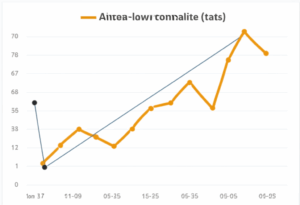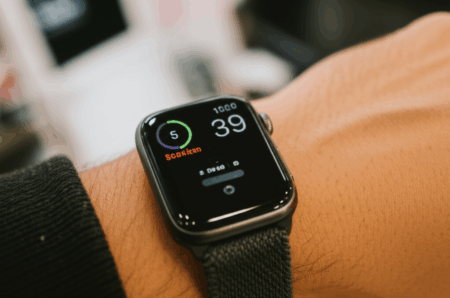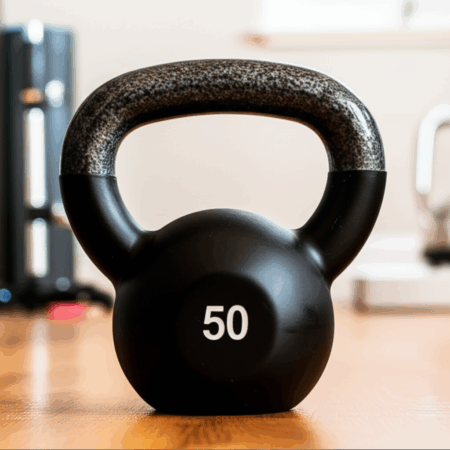Wearable technology has exploded in popularity in recent years, becoming an increasingly integral part of personal fitness journeys. From smartwatches to fitness bands, these devices offer a wealth of data and insights that can help individuals better understand their bodies, track their progress, and achieve their health goals. This article explores the multifaceted role of wearable technology in personal fitness, examining its benefits, limitations, and potential future impact.
The Rise of Fitness Trackers: A Comprehensive Overview
Wearable fitness trackers have evolved significantly since their inception. Early pedometers simply counted steps, but modern devices boast an array of sophisticated sensors and algorithms that monitor a wide range of physiological data.
Key Features of Modern Fitness Trackers
- Heart Rate Monitoring: Tracks heart rate throughout the day, providing insights into cardiovascular health and exercise intensity.
- Step Tracking: Counts steps taken, distance traveled, and calories burned.
- Sleep Tracking: Monitors sleep duration, sleep stages (light, deep, REM), and sleep quality.
- Activity Recognition: Automatically identifies and logs different types of physical activity, such as running, swimming, and cycling.
- GPS Tracking: Records routes and pace during outdoor activities.
- Smartphone Integration: Syncs data with smartphones and other devices for comprehensive tracking and analysis.
- Blood Oxygen Saturation (SpO2) Monitoring: Measures the percentage of oxygen in your blood.
- ECG (Electrocardiogram): Some advanced wearables can record an ECG, which can detect irregularities in heart rhythm.
- Skin Temperature Sensing: Monitors skin temperature, which can be useful for tracking illness or ovulation.
- Stress Tracking: Estimates stress levels based on heart rate variability and other factors.
Popular Types of Wearable Fitness Technology
- Smartwatches: Offer a wide range of features beyond fitness tracking, including notifications, app support, and communication capabilities.
- Fitness Bands: Primarily focused on fitness tracking, typically smaller and more affordable than smartwatches.
- Heart Rate Monitors: Chest straps or armbands that provide accurate heart rate data.
- Smart Clothing: Garments with embedded sensors that track physiological data.
- Smart Shoes: Footwear with sensors that track steps, distance, and running dynamics.
The Benefits of Wearable Technology for Personal Fitness
Wearable technology offers numerous benefits for individuals seeking to improve their fitness and overall health.
Enhanced Motivation and Goal Setting
Fitness trackers can provide a powerful source of motivation by providing real-time feedback on activity levels and progress towards goals.
- Gamification: Many fitness trackers incorporate gamification elements, such as badges, challenges, and leaderboards, to make exercise more engaging and fun.
- Personalized Goals: Wearable devices allow users to set personalized goals based on their individual fitness levels and aspirations.
- Progress Tracking: Seeing tangible progress towards goals can be highly motivating and encourage continued effort.
Improved Awareness of Activity Levels
Wearable technology can help individuals become more aware of their daily activity levels, which can lead to positive behavioral changes.
- Sedentary Reminders: Many fitness trackers provide reminders to move after prolonged periods of inactivity.
- Activity Monitoring: Tracking daily steps, distance, and calories burned can provide insights into overall activity levels.
- Identifying Patterns: Analyzing activity data can help individuals identify patterns in their behavior and make adjustments to their routines.
Data-Driven Insights into Health and Performance
Wearable technology provides a wealth of data that can be used to gain insights into various aspects of health and performance.
- Heart Rate Analysis: Monitoring heart rate during exercise can help individuals optimize their training intensity and improve cardiovascular fitness.
- Sleep Analysis: Tracking sleep patterns can help individuals identify sleep problems and improve their sleep hygiene.
- Performance Tracking: Analyzing workout data can help individuals track their progress, identify areas for improvement, and prevent injuries.
Personalized Feedback and Guidance
Some wearable devices offer personalized feedback and guidance based on individual data and goals.
- Adaptive Training Plans: Some fitness apps use data from wearable devices to create personalized training plans that adapt to individual progress.
- Real-Time Coaching: Some wearables provide real-time coaching during workouts, offering guidance on pace, intensity, and form.
- Personalized Recommendations: Some devices provide personalized recommendations for improving sleep, reducing stress, and optimizing overall health.
Limitations and Challenges of Wearable Technology
While wearable technology offers numerous benefits, it is important to acknowledge its limitations and potential challenges.
Accuracy Concerns
The accuracy of wearable fitness trackers has been a subject of debate. While some devices are highly accurate, others may provide inaccurate data, particularly for certain activities or populations.
- Heart Rate Monitoring: Accuracy can be affected by factors such as skin tone, body fat, and movement.
- Step Tracking: Accuracy can be affected by factors such as stride length and walking speed.
- Sleep Tracking: Accuracy can vary depending on the device and the individual’s sleep patterns.
- Reliance on Algorithms: Many fitness trackers rely on algorithms to estimate metrics such as calories burned and activity intensity, which may not be accurate for all individuals.
Privacy and Security Risks
Wearable devices collect sensitive personal data, raising concerns about privacy and security.
- Data Collection: Fitness trackers collect a wide range of data, including location, heart rate, sleep patterns, and activity levels.
- Data Sharing: This data may be shared with third parties, such as app developers, advertisers, and healthcare providers.
- Security Vulnerabilities: Wearable devices and their associated apps may be vulnerable to hacking and data breaches.
- Anonymization Concerns: Even when data is anonymized, it may still be possible to identify individuals based on their unique patterns of activity.
Adherence and Sustainability
Maintaining long-term adherence to wearable fitness tracking can be challenging.
- Novelty Effect: The initial excitement of using a new device may wear off over time.
- Data Overload: The sheer volume of data provided by fitness trackers can be overwhelming for some individuals.
- Lack of Integration: Integrating wearable technology into daily routines can be difficult.
- Cost: The cost of wearable devices can be a barrier for some individuals.
Potential for Misinterpretation and Anxiety
The data provided by wearable technology can be misinterpreted or lead to anxiety.
- Obsessive Tracking: Some individuals may become overly focused on tracking their data, leading to unhealthy behaviors.
- Anxiety and Stress: Inaccurate or misinterpreted data can lead to anxiety and stress.
- Medical Misdiagnosis: Wearable devices are not intended to be used for medical diagnosis, and relying on them for this purpose can be dangerous.
Maximizing the Benefits of Wearable Technology
To maximize the benefits of wearable technology and mitigate its risks, consider the following tips:
Choose the Right Device
Select a device that meets your specific needs and goals. Consider factors such as accuracy, features, price, and compatibility with your smartphone.
Set Realistic Goals
Set achievable goals that are tailored to your individual fitness level and aspirations.
Focus on Trends, Not Just Numbers
Pay attention to trends in your data rather than focusing on individual numbers. This can provide a more accurate picture of your progress and identify areas for improvement.
Consult with a Healthcare Professional
If you have any health concerns, consult with a healthcare professional before using wearable technology.
Prioritize Data Privacy
Review the privacy policies of wearable device manufacturers and app developers before sharing your data.
Integrate Wearable Technology into Your Lifestyle
Find ways to integrate wearable technology into your daily routine in a sustainable way.
The Future of Wearable Technology in Personal Fitness
The future of wearable technology in personal fitness is bright. As technology advances, we can expect to see even more sophisticated devices with enhanced accuracy, features, and capabilities.
Advancements in Sensor Technology
Future wearable devices will likely incorporate more advanced sensors that can monitor a wider range of physiological data, such as glucose levels, blood pressure, and hydration status.
Artificial Intelligence and Machine Learning
AI and machine learning will play an increasingly important role in wearable technology, enabling personalized feedback, adaptive training plans, and early detection of health problems.
Integration with Healthcare Systems
Wearable technology will become increasingly integrated with healthcare systems, allowing healthcare providers to remotely monitor patients’ health and provide personalized care.
Focus on Mental Health
Future wearable devices may incorporate features that track and promote mental health, such as stress management tools, mindfulness exercises, and mood tracking.
Conclusion: Embracing Wearable Tech for a Healthier Future
Wearable technology has the potential to revolutionize personal fitness and empower individuals to take control of their health. By understanding the benefits, limitations, and best practices of wearable technology, individuals can harness its power to achieve their fitness goals and live healthier, more fulfilling lives. As technology continues to evolve, wearable devices will become even more sophisticated and integrated into our daily lives, paving the way for a future where personalized health and wellness are within reach for everyone.







